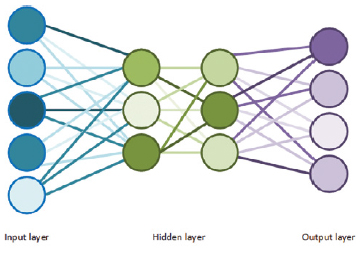THANK YOU FOR SUBSCRIBING
Editor's Pick (1 - 4 of 8)

Cognitive Technology: What Will Watson Become?
Michael Blake, Digital Transformation Manager, Findex


Michael Blake, Digital Transformation Manager, Findex
We’ve entered a period of almost extreme data collection, creating scenarios where the sheer amount of information being collected by machines, for machines is truly unparalleled
 For now, sectors like education, data science, project management, and hospitality are partially immune from cognitive technologies as they remain less predictable and have limited risk to human safety. Computers can augment day to day work, but are still some way from being able to successfully interact naturally with humans from end-to-end. Despite this, we are learning to interact with machines during traditionally human-to-human interactions. Think McDonald’s self-order station or the new self-service checkouts in supermarkets.
“Picture a ladder”
Like climbing a ladder, computers can easily assist in dealing with the bottom three rungs on the ladder – the predictable, repeatable initial steps. Beyond this, things become more complex, and we find the edge of the current capabilities of cognitive technology. As you climb to rung four, you need take account of sway and worry more readily about weather conditions in order to remain upright, reducing certainty. Rung five exponentially increases the variables and so on.
Once computers learn enough to ignore specific variables, they can confidently climb the next rung on the ladder, making the fourth rung now as easy to climb as the first three for everyone. Each rung is more complex than the last, as alternatives stack on alternatives and multiply. Eventually we reach the top of the ladder and realise full cognition, at which point machines can then find unique points of difference. Until then, the machines will keep learning.
Check Out : Top Cognitive Technology Startups
For now, sectors like education, data science, project management, and hospitality are partially immune from cognitive technologies as they remain less predictable and have limited risk to human safety. Computers can augment day to day work, but are still some way from being able to successfully interact naturally with humans from end-to-end. Despite this, we are learning to interact with machines during traditionally human-to-human interactions. Think McDonald’s self-order station or the new self-service checkouts in supermarkets.
“Picture a ladder”
Like climbing a ladder, computers can easily assist in dealing with the bottom three rungs on the ladder – the predictable, repeatable initial steps. Beyond this, things become more complex, and we find the edge of the current capabilities of cognitive technology. As you climb to rung four, you need take account of sway and worry more readily about weather conditions in order to remain upright, reducing certainty. Rung five exponentially increases the variables and so on.
Once computers learn enough to ignore specific variables, they can confidently climb the next rung on the ladder, making the fourth rung now as easy to climb as the first three for everyone. Each rung is more complex than the last, as alternatives stack on alternatives and multiply. Eventually we reach the top of the ladder and realise full cognition, at which point machines can then find unique points of difference. Until then, the machines will keep learning.
Check Out : Top Cognitive Technology Startups
Weekly Brief
I agree We use cookies on this website to enhance your user experience. By clicking any link on this page you are giving your consent for us to set cookies. More info
Read Also
Navigating Compliance Challenges in ESG AML and Digital Onboarding
Chuan Lim Ang, Managing Director and SG Head of Compliance, CIMB
A Vision for the Future: Automation, Robotics, and the Smart Factory
Joe Tilli, State Industrial Automation Sales Manager, Lawrence & Hanson
The Rise of Hyper Automation
Erdenezaya Batnasan, Head of IT End-User Support Service Department, Khan Bank
Transforming Business Operations with Robotic Process Automation
Simon So, CMGR, MCMI, Regional Head of Digital Solutions, Richemont Asia Pacifi
Combining Automation with AI to Achieve Human-Like Interaction
Kain Chow, General Manager, Technology & Transformation, New World Development Company Limited
Implementing RPA - 5 Ultimate Prerequisite
Indra Hidayatullah, Data Management & Analytics Division Head, Pt. Bank Tabungan Negara
Incorporating the power of recognition into our vendors' sustainability journey
Cynthia Khoo, Head, Central Procurement Office, OCBC Bank (Malaysia) Berhad
Elevating Guest Experience with Data
Clive Edwards, Senior Vice President, Operations, Capella Hotel Group





















